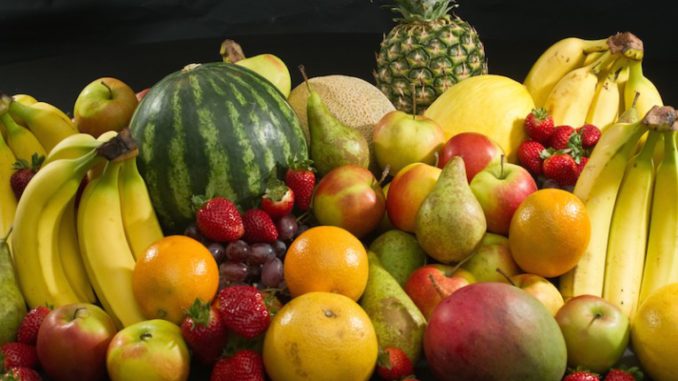
With over 537,000 confirmed cases of COVID-19 and about 24,000 record deaths, the Coronavirus pandemic is certainly the biggest disaster of scale and depth we will witness in this lifetime. Amidst growing concerns, experts have deemed it crucial to recognize that travel bans and mandatory quarantines alone cannot end the outbreak; rather, proactive measures as individuals or households have become the gospel of safety and health. On the frontline by World Health Organization (WHO) on COVID-19 prevention or how it can be slowed down is – social distancing; washing hands often with soap and water; staying home when sick; covering mouth and nose with flexed elbow or tissue when coughing or sneezing; dispose of used tissue immediately and frequent cleaning of regularly-touched surfaces and objects. Infrequently mentioned however are non-external means to safeguard the spread through shielding our bodies and especially that of our children from infection. It is therefore imperative to protect yourselves and little ones, through nutrition and diet, as the corona virus continues to spread. Our Immune System
The immune system according to Zapatera, Prados, Gómez-Martínez and Marcos (2015) is a complex defense network that protects body against potentially harmful agents and has the capacity to respond to millions of antigens. The innate immune response represents the first defensive system in the organism, and it is particularly important for preventing the entry of infectious agents into the body and, if they enter, eliminating them rapidly Zapatera, Etal (2015). Your child’s natural defense against infections, their immune system, attacks and destroys foreign substances (known as antigens) it senses. This is what keeps them healthy and upturns some mild symptoms they may encounter from time to time.
A type of white blood cell known as lymphocytes (2 kinds; B lymphocytes and T lymphocytes) help the body remember these foreign bodies and trigger their destruction. During an attack, B lymphocytes are deployed to create antibodies that remain in our bodies and remembers the antigens, should they return again. This explains why children who recover from some diseases (like Chicken Pox) don’t ever have it again, even when exposed to it. It is worthy of note that some kids, due to factors beyond their control (like environmental and economic conditions or defects) are failed by this natural body defense and succumb to sicknesses. To mitigate such circumstances, it is very important to fortify your growing children’s immune systems through improved diet and lifestyle changes. This is often referred to as Passive Immunity. Strengthening their Immunity with Nutrition
Research has shown that nutrition plays a key role in enhancing immune resistance and that lack of micronutrients, especially zinc, selenium, iron, and the antioxidant vitamins, can lead to clinically significant immune deficiency and infections in children. It’s critical now more than ever that we strengthen their immunity or natural body resistance to infections and diseases through nutrition.
Fruits and vegetables Examples of good sources of immune-supportive nutrients include fruits and vegetables. At this time when there is so much panic buying as a result of the partial lockdown, it’s important to remember to stock up on fruits and vegetables as well. Most fruits and veggies contain antioxidants. Antioxidants – which include beta carotene and vitamins C and E, are essential nutrients and can help keep your child’s immune system strong. They help protect their bodies; keeping them healthy and bouncing back faster should they get sick or catch a cold. Proteins.
The simplest and most direct relationship between food and immunity is that of protein. Without sufficient protein (from sources as milk, meat and eggs) in children, their immune responses are compromised and the potential for infection and inflammation increases, according to Mark Anthony (Ph.D), an Adjunct Professor of Biology. Vital to building and repairing body tissues, proteins also fight viral and bacterial infections. The most common source of protein relatable to children is Milk. One of the most essential foods rich in several vitamins and minerals, milk includes calcium, which is important for growing bones and teeth. Calcium is more easily taken into the body from milk than from vegetable foods.
Milk, as one of the richest sources of nutrients, is nature’s generous contribution to a well-balanced diet. Milk contains essential nutrients which include protein, carbohydrate as in lactose, as well as different fatty acids and a wide range of micronutrients including vitamins, minerals and trace elements. Globally, there are growing conversations and studies which reveal the need for special milk for children – usually extra fortified to meet their nutrient requirements. One of such dairy products is Peak 456 growing up milk specially formulated for children 4-6 years of age.
From the stables of foremost producers of dairy nutrition, Friesland Campina, Peak 456 is fortified with DHA (an omega-3 fatty acid which supports brain function and eye health) and provides a strong combination of anti-oxidants: beta-carotene, vitamin E and C, Zinc, Selenium and Manganese to strengthen the body’s natural resistance. It also contains vitamin A and D3, vitamins with proven immune support activity. In addition, Peak 456 has added prebiotics called Fructo-oligosaccharides. Prebiotics are non-digestible food components belonging to the fiber family that stimulate growth or activity of a number of good micro-organisms in the intestinal flora such as Bifidobacteria and Lactobacilli. This helps to provide a first line of defence against pathogenic bacteria and viruses.
Owolabi, a nutrition expert, wrote from Lagos.
END

Be the first to comment